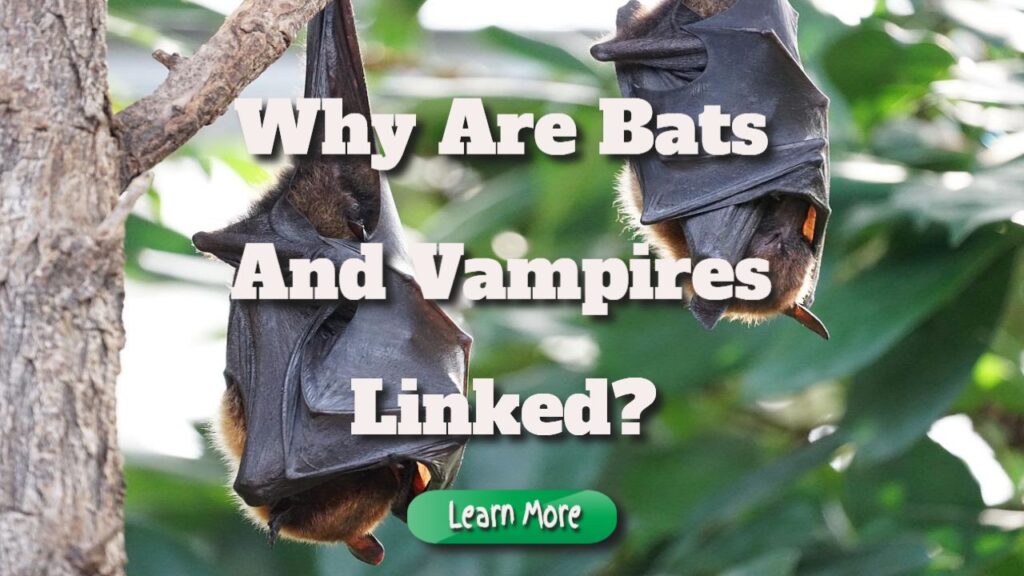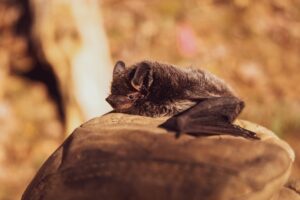Why Are Bats and Vampires so Inextricably Linked?
Why Are Bats and Vampires so Inextricably Linked: Have you ever wondered why bats are so closely associated with vampire folklore that you can still see them in the twenty-first century?
Was it all Stoker’s fault?
Or, if you’ll allow the irony, did the great nineteenth-century author bring to light myths and customs whose origins had gone into the shadows of history?
Let us look into Folklore.
Vampires first appear in Sumerian and Babylonian legends around 4,000 years ago.
These tales were then passed down through Assyria, Greece, China, India, and the ancient European continent. In early Slavic communities, a bat hovering above an unburied corpse was supposed to reanimate the recently deceased into a vampire (particularly in Romania).
This is commonly cited as the most plausible (albeit debatable) origin of the bat-vampire relationship. This link could also be explained by mediaeval art, which depicted devils with bat wings, baby-like cherubs, and majestic angels with dove or eagle wings.
The world of flying creatures is nearly totally dominated by beautiful feathers and plumage.
With its skeletal, leathery wings, the bat, on the other hand, was an obvious subject to choose for an unnatural and horrifying opposition.
Literature from the past
Bats were associated with cryptic and supernatural gothic literature as dark animals of the night long before Bram Stoker’s writings.
The Vampyre, the first entire work about a vampire in English, was written in 1816 by John William Polidori as part of a competition involving Polidori, Mary Shelley, Lord Byron, and Percy Shelley. (The novel Frankenstein was inspired by the same competition.)
Varney the Vampire (also known as “The Feast of Blood,” 1845), which was published fifty years before Dracula in the tremendously popular “Penny Dreadful” horror books of the time, has an image of a bat-like vampire.
The story Vikram and the Vampire was inspired by the Hindu folktale “Baital Pachisi” (1870). The Baital is a vampire-like demon that appears as a large, bat-like creature hanging upside down from a tree.
Baital Pachisi was initially written down in Sanskrit in the early 11th century, however, it is based on previously lost oral traditions.
While writing Dracula in the 1890s, Stoker came across a newspaper item about vampire bats in a New York newspaper, which had a direct impact on the narrative. “I haven’t seen anything destroyed that quickly since I was riding a horse out in the sticks.”
One of those ‘vampire’ bats had attacked her in the middle of the night, and she didn’t have enough blood to get up.” Quincey Morris, Dracula
Stoker, like many other writers before and after him, perhaps underestimated the size of the vampire bat or believed that a strong narrative was more important than truth.
Stoker invented the concept of a vampire disguised as a bat (or possibly a wolf). Count Dracula frequently disguises himself as a gigantic bat fluttering outside Lucy’s window.
The “authentic” vampire bat
When Spanish explorers first saw the blood-sipping, mouse-sized bats in their natural habitat of Central and South America, they dubbed them “vampires” (literally, “blood-drunk”) because they were the only known species of bat that fed solely on the blood of their prey, which was usually small mammals and livestock.
Bat information
Only three of the world’s more than 1,300 bat species are vampire bats: the common (Desmodus rotundus), the white-winged (Diaemus youngi), and the hairy-legged (Diaemus aculeatus) (Diphylla ecaudata).
A Venezuelan research team discovered an anticoagulant glycoprotein previously unknown in vampire bats. This anticoagulant, dubbed “draculin,” has the potential to contribute to the development of new drugs to combat heart disease and stroke.
The Wildlife and Countryside Act of 1981 and the Conservation Regulations of 1994 both protect bats as a species.
According to data, all bat species have declined over the last 100 years, particularly since the 1960s.
Bats are an important species in their tropical and desert habitats. If bats did not pollinate and disseminate seeds, many local ecosystems would collapse.
Because bats are the primary predators of nocturnal insects, they control many of the most irritating pests. One bat can swallow up to 3,000 flying insects per night during the summer.
In the aftermath of contemporary vampire novels, the transformation from vampire to bat (and back again) has mostly been forgotten.
It is rarely associated with today’s throngs of adolescent bloodsuckers, who congregate in high schools and graveyards. Count Dracula would be unimpressed.
The post Why Are Bats and Vampires so Inextricably Linked? appeared first on https://gqcentral.co.uk







Comments are closed